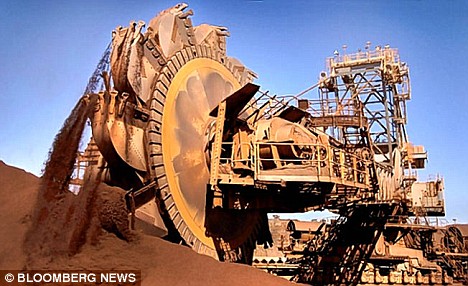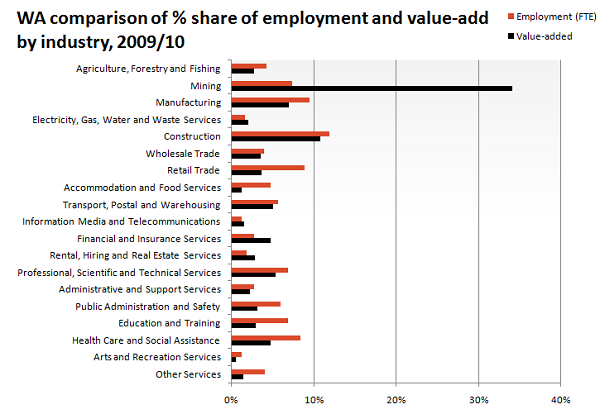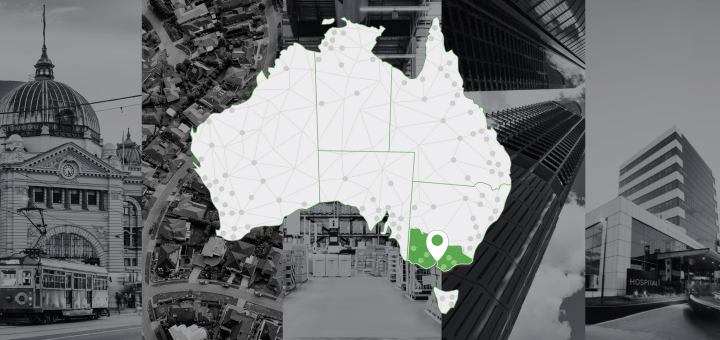Western Australia is often quoted as the “powerhouse” of the Australian economy, due to its huge mining wealth. From gold in the Kalgoorlie area, to the Pilbara’s iron ore, Argyle diamonds, Collie’s coal, natural gas in the north-west shelf as well as, nickel, magnesium, aluminium and lead, WA has been blessed with natural resources. But what impact do they have on the state’s economy, and is there more to the WA economy than just mining? economy.id can provide some insights.

At the time of writing, most of the Western Australian councils that subscribe to .id’s economic profile (branded economy.id) sit within metropolitan Perth and don’t have large mining industries. The exception is the Town of Kwinana, which contains Nickel and Aluminium refineries as very large contributors to their economy. All our Western Australian clients have a benchmark to WA overall though, and the new modelled industry data by National Economics shows some interesting trends in WA.
How big is the mining industry?
One of the easiest and most relevant ways to look at the size of an industry is by employment. The Mining industry in WA employed 68,800 people in 2009/10. Another 15,000 or so were employed in the manufacturing of base metals, coal and petroleum – ie. refineries. Together, this represents just 7.2% of all Western Australia’s employment (5.9% for mining, and 1.3% for mining-associated manufacturing). This doesn’t seem like a lot, for it to be considered the powerhouse of the economy. Look at the change over time though, and you see that mining employment has increased by 144% in just 10 years (since 2000), at a time when total employment in WA increased by 34%. So it certainly has been booming.
Looking at Full-Time Equivalent employment boosts mining quite a bit – up to 7.3% of total employment and another 2.0% for mining-associated manufacturing – they work longer hours in these industries. Still, this means that over 90% of all hours worked in the West are NOT in the mining industry.
What does mining contribute to the economy?
The other key method of looking at the size of an industry is its “value-add” – ie. what is the output of the industry worth to the economy when you remove the costs of its inputs. When you look at this, it shows how mining gets its reputation as the powerhouse of the economy.
In value-added terms, the mining industry is worth a whopping $56.9 billion in 2009/10, or 34.2% of WA’s total value-add. Mining-associated manufacturing makes up another $2.3 billion or 1.2%.
This disparity between employment and value-add is the highest of any industry. The chart below shows this very clearly. Retail trade employs more workers (even on an FTE basis) in WA than mining, but has a value-add only about one-tenth as as large.

Source: National Economics modelled industry data, from economy.id for the Town of Kwinana.
Mining has such a high value add because of the high value of commodities relative to their cost of extraction. There is considerable overhead in exploration and setting up, but once you have a mine going, it is incredibly profitable. It is pretty clear from this why:
- Salaries for working in mining are so high – some might say it’s compensation for a dirty, dangerous job, but the main reason is that an employee in mining provides a productivity of far more than this salary – wages are still much less than the money companies receive for the commodities they produce. This is the same reason sports stars and entertainers get paid so much.
- Governments are keen on taxing the mining industry specifically – the value of output relative to cost of input is far out of proportion to all other industries.
- Mining industries can afford to fly in and out their workers, with the associated costs on communities and families, as detailed by Bernard Salt’s article in Adelaide Now. You can see the numbers of FIFO workers by looking at any of our Perth area economy.id sites – Residents by Place of Work, for the Mining industry. Each council has several hundred to several thousand workers in this category.
In purely employment terms there are still very few people working in mining in WA. In terms of contribution to the total economy though, it can certainly be described as a powerhouse. The high value of these mining industries undoubtedly have flow on effects to other areas of the economy.
Interestingly, Queensland, also regarded as a “resource state”, has a more diverse economy. Mining only makes up 16.9% of value-added there ($36 billion), and a mere 2.7% of employment.
economy.id provides these and many more insights into your economy. At present, 12 councils and regions in Western Australia have economy.id. This list on the .id website will take you to their economic profiles.
.id is a team of demographers, population forecasters, spatial planners, urban economists, IT and data experts who use a unique combination of information, applications and consulting to help governments and organisations understand people and places for evidence-based planning.
Access our population forecasts for Local Government Areas here.











